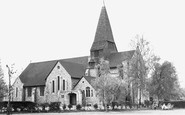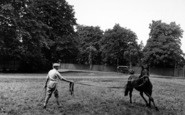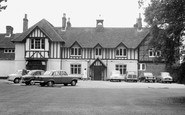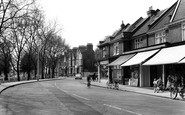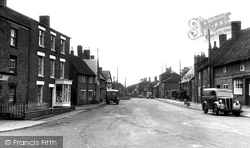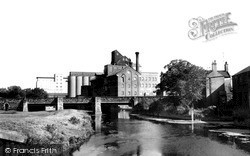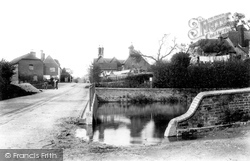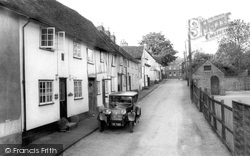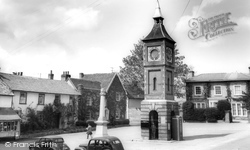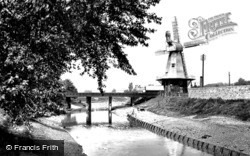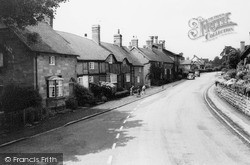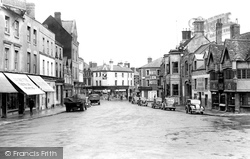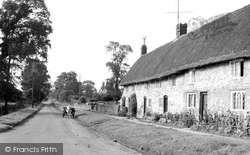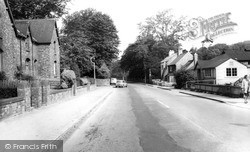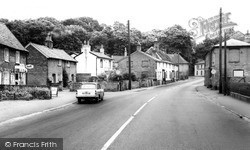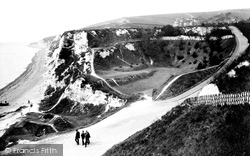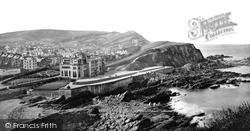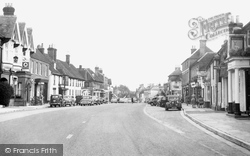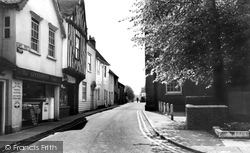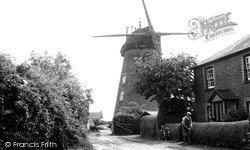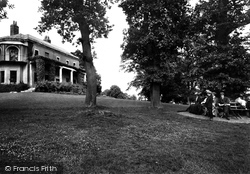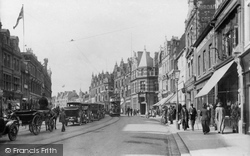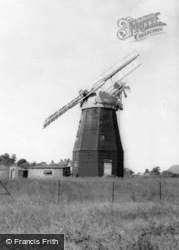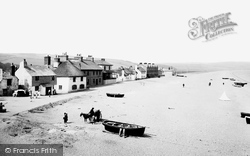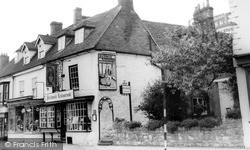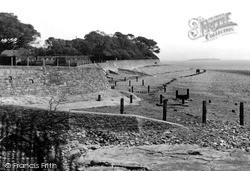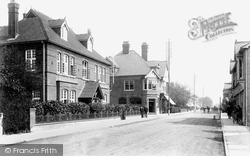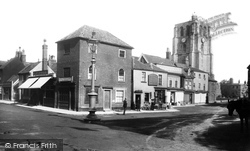Places
2 places found.
Those places high-lighted have photos. All locations may have maps, books and memories.
Photos
5 photos found. Showing results 181 to 5.
Maps
29 maps found.
Books
Sorry, no books were found that related to your search.
Memories
668 memories found. Showing results 91 to 100.
Old Lewisham Central Library
In the early 1950s I worked at the Central Library, near St Mary's Church. My most vivid memories are the long working hours (difficult for the social life of a young girl) and having to manually count the 'issue' before ...Read more
A memory of Lewisham by
Rowley Bristow Hospital
This hospital played a big part in my childhood. My sister spent several weeks there after suffering a severe cut to her knee in the 1960s, her godmother worked there as a physiotherapist, and not long before it closed, my ...Read more
A memory of West Byfleet by
Breaking In A Yearling
A further photo of my father Charlie King breaking in a yearling.
A memory of Newmarket by
School Days And Beyond
Having just stumbled on this website I felt compelled to add my recollections of living in Fenham in Cheeseburn Gardens from circa 1961 to 1980. I lived 2 streets down the hill from the first contributor who lived in Ovington ...Read more
A memory of Fenham by
Growing Up In Buckhurst Hill 60's 70's
I used to live in The Meadway, and went to St Johns infants School-a few memories of playing on 'the boxes' at play/lunchtime. These were actually old beer crates, and long before health and safety spoiled ...Read more
A memory of Buckhurst Hill by
My Memories Of Melworking At Leybourne Grange Hospital
Hi yes I remember my time at the hospital well,I worked in the play therapy from 1971 to 1976. I loved working at the hospital and have many happy memories. I worked as a night nurse for two ...Read more
A memory of West Malling by
My Childhood In Wolverhampton 1946 1955
I played in the standing corn stooks behind our house, had my first pony/horse ride at Dixon's farm where my horse went berserk in a potato field, so I was put onto and stayed on a horse lead. I flew my ...Read more
A memory of Wolverhampton by
Fairdene School
I was a pupil at Fairdene School from 1960-1965. I had lived in New York until I was 6, so being a girl with a Yankee accent in a school for young ladies was quite a challenge! The two female headmistresses, Miss Turner and Miss ...Read more
A memory of Chipstead by
Happy Days Growing Up In Barnes
The picture of Church Road where it ran parallel with The Crescent with all those familiar shops brings memories flooding back. I started life at 33 Glebe Road in 1944 and spent 5 happy years there before moving to ...Read more
A memory of Barnes by
Doon The Den
I stayed in Denhead and used to play down the den almost every day. We used to go to school via the gap either next to Ciff Bells house or the gap next to smiths shop. We used to go along the cliffs behind the scrappiest then straight ...Read more
A memory of Kennoway by
Captions
388 captions found. Showing results 217 to 240.
Some of the houses are built of brick, some of stone. The van parked on the left of the street is advertising Mackeson's stout.
These vast buildings, the brick ones in part dated 1886, are well known landmarks when approaching Wellingborough from the south.
Bricks were made here in Victorian times, and there were several flour mills.
At the end is Red House, a Tudor farmhouse with a brick front of c1715. The school playground is on the right.
The clock tower was built of red and white brick in 1864. It was renovated in 1987, and has seating on the ground floor. Chandler's ironmonger's shop to the left has closed.
The brick and white weatherboarded smock mill still stands in Mill Lane on the banks of the River Tillingham, though it is now converted for use as a guest house.
The houses in this scene are typical of Stoneleigh, which retains a pleasant mixture of brick, timber and local red sandstone.
Plaster, timber, brick and stone have all been employed to provide an interesting variety. The twin-gabled Old Wine House, near right, is dated 1537.
We can almost feel the peace and tranquillity typified by a road deserted apart from a solitary horse-drawn delivery cart, standing near an attractive row of brick-built thatched cottages.
On the left is the end of a long and attractive terrace of Victorian brick houses, which still survives.
The doors and windows have been altered on the next pair of cottages, whilst the white Rosemary Cottage and the brick gable end beyond remain unchanged.
It is here that the sea can be reached, albeit by a steep path, in a break in the cliffs enlarged by quarrying.
The imposing yellow brick Gothic Revival building, with 210 rooms and a 1,000ft terrace, put Ilfracombe in the first rank of resorts when it was opened on 15 May 1867.
Further on, the three-storey brick building has been a draper's shop for some 170 years; its name Commerce House records that this was where Odiham's first bank opened in 1806.
The substantial building behind the trees is Billericay church, which was rebuilt in 1780, though retaining its fine 15th-century brick tower.
In 1775 a brick tower-mill was built near the crossroads by John Matchett, a Colchester millwright.
The house, originally a brick one of 1759, was extended and given the Regency stucco villa treatment in the early 19th century.
Beyond the bank with its pyramid-roofed tower are the elegant terra cotta and brick buildings flanking the entrance to Queen Victoria Street.
Cattell's Mill is a black-tarred weatherboarded smock windmill on an octagonal single-storey brick base.
During a storm in the winter of 1978-9, waves were breaking over the tops of the houses.
Watling Street has a good range of buildings, mostly dated 18th and 19th century, built in a mix of materials - stone, brick and render.
The slipway was privately owned, but with perhaps too little investment the reinforced concrete sections had begun to deteriorate and break up, with the metal rods exposed and rusting.
The building on the left was the Constitutional Club; it was built in a Bedford Park Domestic Revival style around 1890 with steep tiled roofs and much use of brick banding.
The tall brick building was Thomas Self, greengrocer and market gardener; to the left was Clement Poll, butcher.
Places (2)
Photos (5)
Memories (668)
Books (0)
Maps (29)

